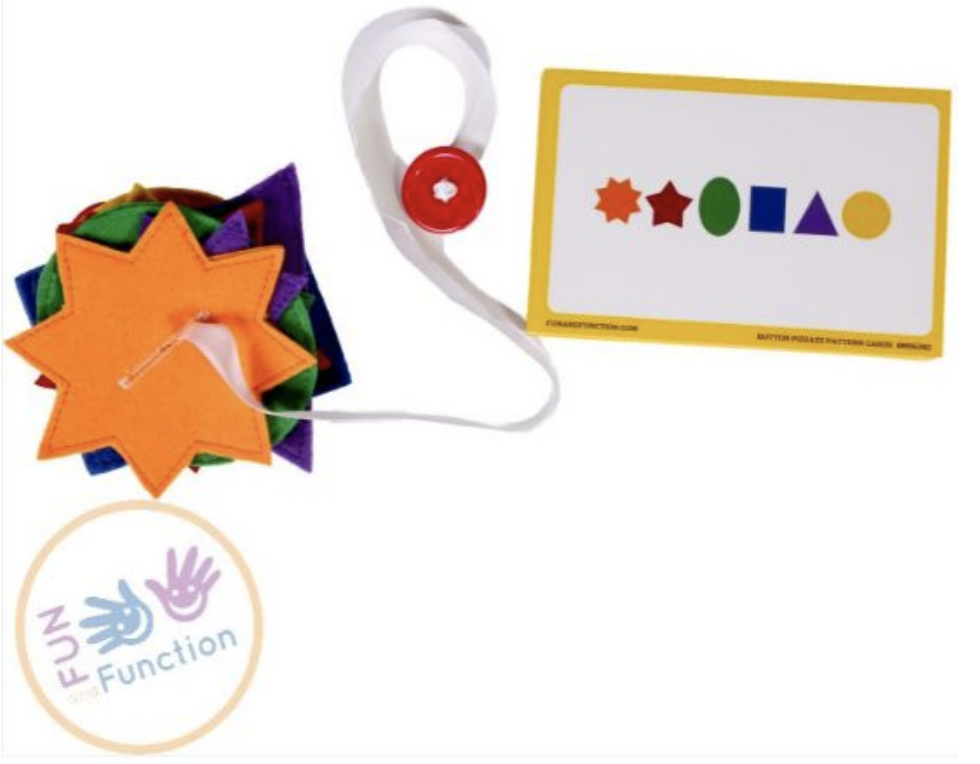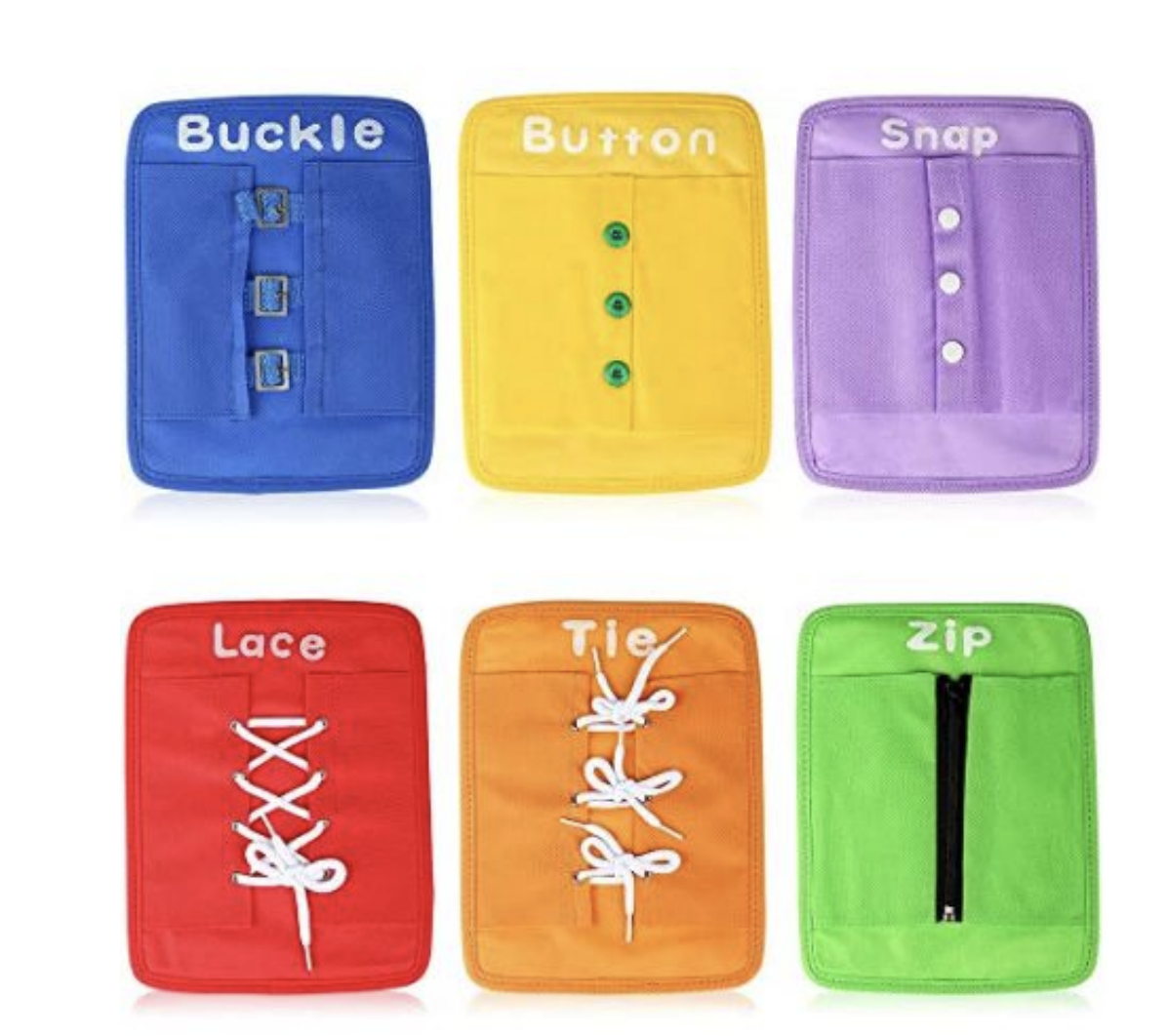As your child gains independence and is learning to complete dressing activities on their own, clothing fasteners may be a tricky and frustrating skill for them to master because they involve many skills. Completing clothing fasteners, such as buttons and zippers, require refined fine motor skills and grasp patterns, visual motor skill and bilateral coordination skills. Children must also be able to attend long enough to complete the task and have a high enough frustration tolerance to try several times if they are not initially successful.
There are many activities we can complete with children to help them develop the motor skills and confidence to complete clothing fasteners independently. There are also fun ways to work on buttoning specifically and help children to sequence and motor plan the exact steps involved prior to progressing to fastening or unfastening buttons on the shirt they are wearing.
Here are a few techniques to help children master buttons:
- Button Ribbon: The button ribbon is a fun way to teach kids to thread the button through the slit in the fabric and is motivating to children as you can make fun shapes with the fabric. You can also work on patterns and color or shape recognition with this task. Here is the link to a button ribbon that I love using with my kids during treatment sessions: https://funandfunction.com/button-pizzazz.html

- Buttoning Board: One way to practice buttoning is with the use of a button board The buttoning board provides children with an opportunity to learn the skills required with larger buttons that they can more easily visually attend to. There are a variety of fastening board, not just buttoning that you can use with your child, such as those found on Amazon: https://amzn.to/3irKxGS

- Stuffed Animals: Another fun way to practice buttoning is on stuffed animals. Have your child put one of their shirts onto a stuffed animal and practice dressing them up for special occasions!
- Mirror: When it is time to progress to fastening buttons on a shirt that they are wearing, start with large buttons (such as those on a sweater) and progress to smaller buttons. Use a mirror to provide visual feedback and help your child see what they are doing.

Blog by:
Danielle Kleeburg – OTD, OTR/L
Occupational Therapist
